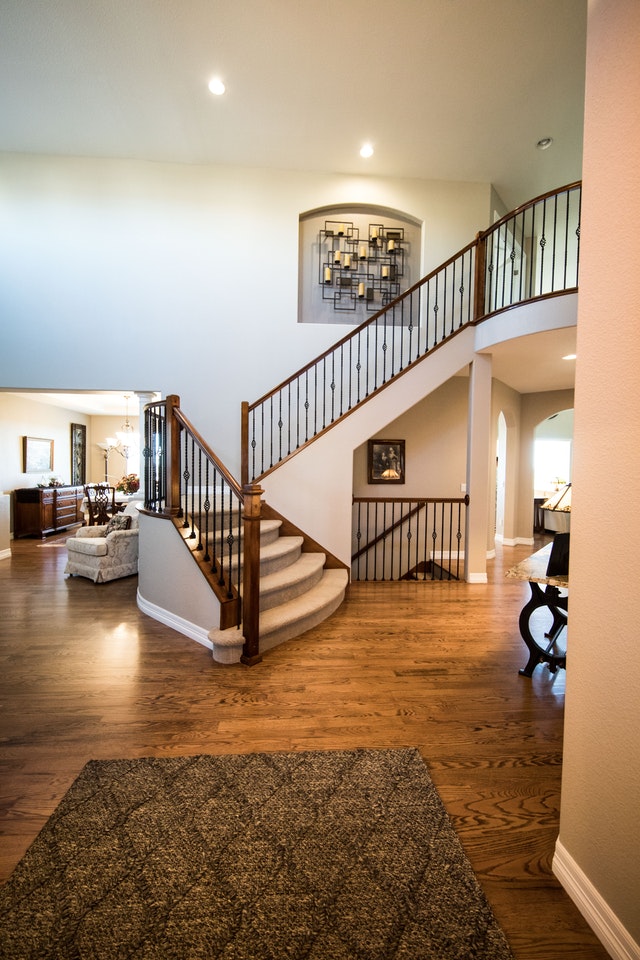I’m old enough to remember when high-end real estate, like the large estates in Great Falls, barely kept up with inflation. I told a client just the other day that when people built those custom homes, appreciation wasn’t part of the plan. It simply didn’t happen. If you spent $2 to $5 million on a house, chances were you weren’t getting that money back. The idea of turning a profit when it came time to sell wasn’t even part of the conversation.
For most of my career as a Real Estate agent we didn’t think of a primary residence as an investment, and frankly, we still shouldn’t. Real estate trainers used to spoon-feed us lines like “Your home is a forced savings account” or “It’s like cash in the bank.” Looking back, they weren’t entirely wrong, but not for the reasons they thought. Most homes performed like a bank account in the most literal sense. After accounting for inflation, transaction costs, and maintenance, most people would break even.
So why did people still buy those large and expensive homes? The answer wasn’t just lifestyle. It was tax strategy.
A new listing at 180 River Park Drive illustrates this perfectly, sold for $1,700,000 in 2010 and 7 years later in 2017 it sold for less than $1,400,000. However, during that time, the owner could itemize all of the interest & tax payments accounting in a significant tax savings.
What Changed in 2017
Before 2017, buyers of high-end homes could rely on a trifecta of tax benefits: mortgage interest, property taxes, and state and local taxes (SALT). The math often worked out such that the federal government was effectively subsidizing your housing payment, especially if you were a high-income W-2 earner in a place like Northern Virginia or DC.
Then came the Tax Cuts and Jobs Act. Starting in 2018, the SALT deduction was capped at $10,000, regardless of whether you were single or married. That hit high-tax, high-property-value regions like ours hard.
And yes, I'm old enough to remember the slowdown. In Vienna, where I lived and worked, the new construction market cooled fast. The house I bought in the summer of 2018 sat on the market for six months, went through multiple price cuts, and still had no bites until I stepped in. That became the new normal for high end homes throughout Northern Virginia.
Between 2008 and 2020, when you factored in inflation, upkeep, and improvements, there was virtually no real appreciation. And with the tax incentives gutted, the financial case for luxury housing got a lot weaker.
I noticed this on a home I saw a couple weeks ago. 309 Charles Ct for example sold as new home in Vienna, VA for $1,350,000 in 2012, then 6 years later only sold for $1,450,000 after 4 months on the market.
What the New Bill Proposes
Fast forward to today, and the House just passed, albeit far from being final or passing the Senate, what’s being called the “Big Beautiful Bill.” Buried in the fine print is a major change to the SALT cap.
Here are the proposed changes:
-
The SALT deduction cap would jump from $10,000 to $40,000
-
But only for households earning under $500,000 AGI
-
Single filers and married couples get the same $40K cap—so the marriage penalty stays
-
Both the income cap and deduction limit will increase 1% annually through 2034
In short: this isn’t a full repeal of the 2017 cap. But it’s a major change for upper-middle-income buyers in high-cost markets like Northern Virginia and DC.
| Feature | Pre-2017 | 2018–2023 (TCJA) | Proposed Bill (2024+) |
|---|---|---|---|
| SALT Deduction Limit | Unlimited | $10,000 | $40,000 |
| Marriage Penalty | No | Yes | Still yes |
| Income Cap | None | None | $500,000 AGI (indexed 1%/yr) |
| Deductible Taxes | State income, sales, property | Same (but capped) | Same (higher cap if eligible) |
| Key Impact | Maximized deductions | Deductions gutted for high earners | Partial restoration for upper-middle earners |
Real Scenario: Does It Actually Matter?
Case Study: Dual-Income Buyers in Vienna, VA
-
Income: $450,000 AGI (married)
-
Home Price: $1.8M
-
Property Tax: ~$20,000/year
-
State Income Tax (VA): ~$23,000/year
-
Total SALT Liability: $43,000
Under Current Law:
-
Deductible SALT = $10,000
-
$33,000 lost deduction = ~$12,000 in missed federal tax savings
Under the New Proposal:
-
Deductible SALT = $40,000
-
Recovered deduction: $30,000 = ~$11,100 in tax savings
✅ Net gain: $30,000 in deductions, $11K+ in real tax savings
So yes, it matters. For buyers in this income bracket, a $10K–$12K reduction in annual tax burden might make it easier to rationalize an additional $1,000/month payment on a $2M home instead of a $1.5M one. It won’t create a frenzy, but it will move demand at the margins, which is exactly where luxury markets live.
Final Word: It’s Not Law—Yet
The bill passed the House, but it’s now sitting with the Senate and getting lots of pushback. The SALT provision could be amended, delayed, gutted, or quietly killed. Nothing is guaranteed.
But if you’re a buyer, seller, or owner in the $1.5M–$3M range, and your household income is under $500K, you need to be watching this. It could materially change your after-tax cost of ownership in Northern Virginia and DC.

Khalil El-Ghoul
Khalil El-Ghoul is a seasoned real estate broker actively helping sellers and buyers throughout Northern Virginia, DC, and Maryland. Known for his no-nonsense approach, Khalil combines expert market insight with honest, objective advice to help buyers and sellers navigate every type of market—from calm to chaotic. If you’re looking for clarity, strategy, and a trusted partner in real estate, he’s the one to call. 571-235-4821, khalil@glasshousere.com






